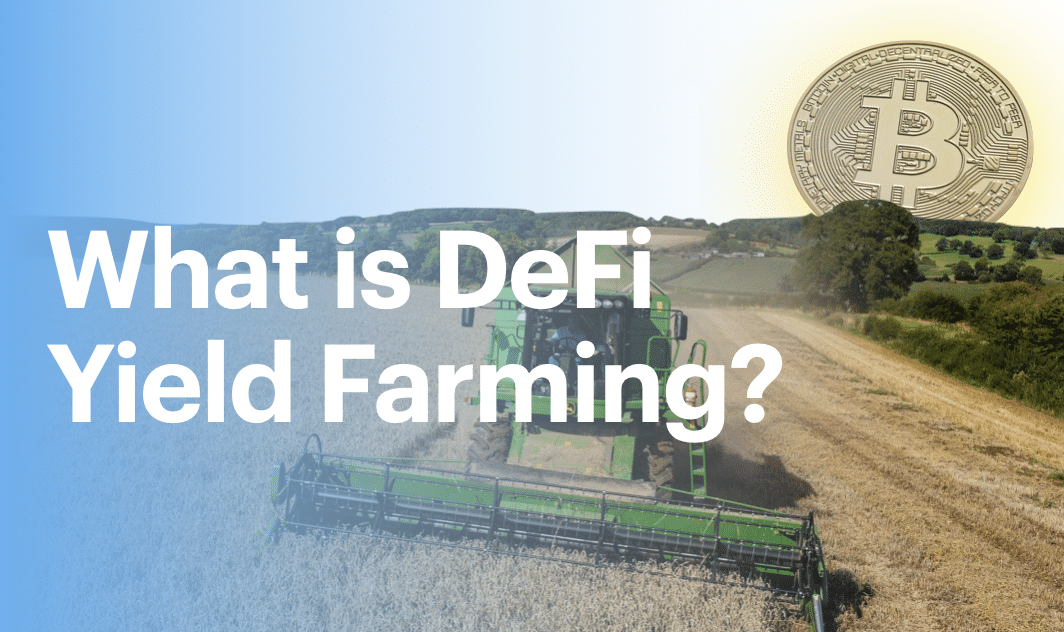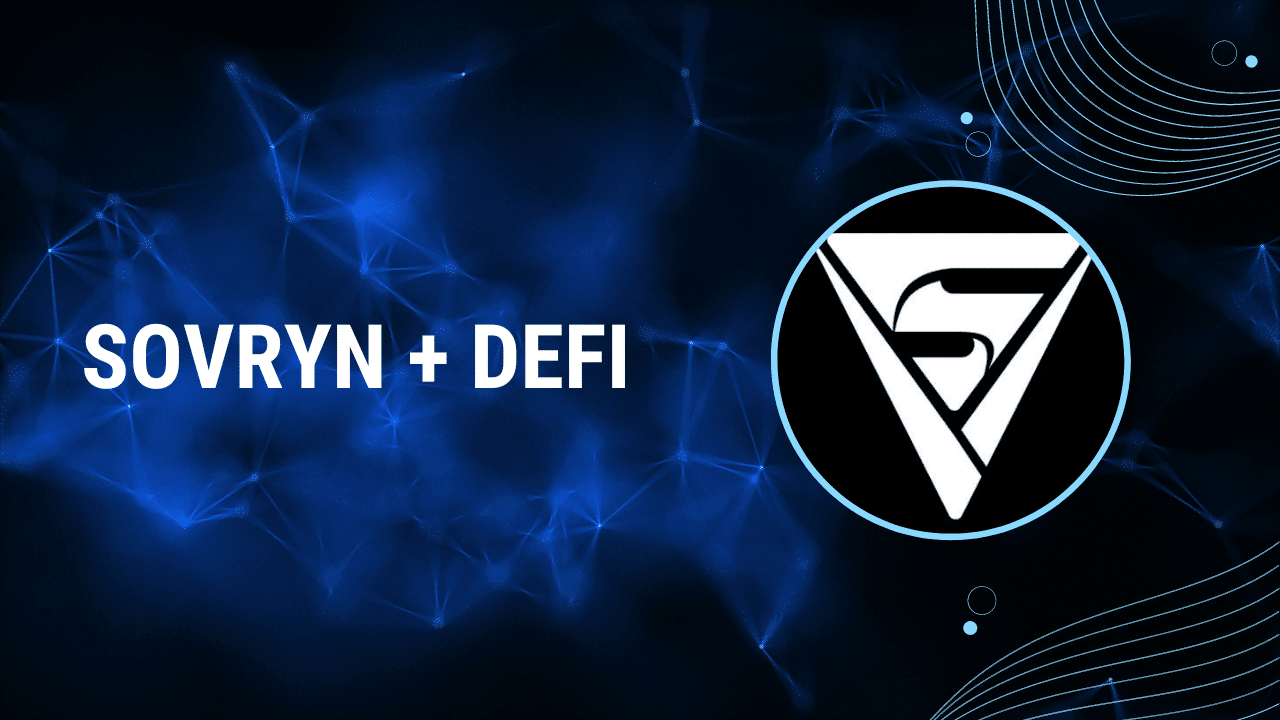Contents
|
|
Defi Yield farming is a way to make more crypto with your crypto. It involves you lending your funds to others through the magic of computer programs called smart contracts. In return for your service, you earn fees in the form of crypto. Simple enough, huh? Well, not so fast.
Decentralized Finance (DeFi) has taken the world by storm due to the sheer innovation and flexibility it brings to traditional finance. One of the more exciting properties of DeFi happens to be yield farming. This guide will take a detailed look at what yield farming is and how you can use it to generate passive income.
Contents
What is DeFi Yield Farming?
Yield farming is the practice of staking or locking up cryptocurrencies in return for rewards. Users can earn either fixed or variable interest by investing crypto in a DeFi market. The idea is to lock up funds in a liquidity pool – smart contracts that contain funds. The liquidity pools power the marketplace where users can exchange, borrow, or lend tokens. Once you’ve added your funds to a pool, you officially become a liquidity provider.
The idea of farming first started out when developers began handing out users a small share of transaction fees for contributing liquidity to a particular app such as Uniswap or Balancer. However, the most well-known example of yield farming is Compound when they issued the COMP tokens to their lenders and borrowers for using their protocol. It was an instant success and at one point made Compound the biggest DeFi project in the world.
How Does Yield Farming Work?
Yield farming could be achieved by following multiple processes. Let’s go through some of the more popular ones.
#1 The Standard AMM Model
The whole yield farming model is closely related to the automated market maker (AMM) model, which involves liquidity providers (LPs) and liquidity pools. At its very core, an AMM works like this:
- The liquidity provider puts funds into a liquidity pool
- The pool is used to power a marketplace where users can lend, borrow, or swap tokens.
- Upon using the pools, the user accrues fees, which are then paid out to the liquidity providers.
While this is the core concept, the implementation may vary from project to project. The overall fees accrued are paid off to the LPs for their services.
#2 Liquidity Mining
Another interesting concept that economically incentivizes LPs is the distribution of a new token or liquidity mining. Let’s say that there is a token X, and it is difficult to obtain it in the open market. However, by providing liquidity to a specific pool, the LP may get X tokens as a reward. This could incentivize LPs to lock up their tokens in a pool.
The rules that govern how these tokens are distributed are dependent on the protocol. However, the basic idea is that they get a return based on the amount of liquidity they provide to the pool.
When it comes to the funds locked up in the pools are mostly stablecoins like DAI, USDT, USDC, BUSD, etc. Some protocols may mint tokens that represent the coins you have deposited into their system. For example, upon licking up DAI in Compound, you get cDAI.
Yield Farming Returns: How Do We Calculate It?
Typically, the yield farming returns are calculated as annualized. The most common metric used to measure these returns are Annual Percentage Rate (APR) and Annual Percentage Yield (APY). APY usually gives you compounded returns, aka the profits generated are directly reinvested to produce more returns. Having said that, do keep in mind that all these APR and APY percentages are just estimations. DeFi is a crazy space, and yield farming, in particular, is highly competitive. As such, rewards may fluctuate rapidly.
Best Yield Farming Platforms
Now let’s look through some of the more popular yield farming platforms. After all, doing a little research on what you can receive through these platforms is a lot more sound strategy than just blindly investing in them.
Compound
Token: COMP
TVL: $5.25B
Let’s start with the one that started it all. Compound has an algorithmic money market that allows users to lend and borrow assets. The rates in the market are adjusted based on supply and demand. Anyone with an Ethereum wallet can supply assets to Compound’s pools.
MakerDAO
Tokens: MKR and DAI
TVL: $7B
The DeFi market leader and one of the most well-known protocols in the world, Maker is a decentralized credit platform that creates DAI – a stablecoin algorithmically pegged to the USD. Anyone can open a Maker Vault and lock collateral assets like ETH, BAT, USDC, or WBTC. By locking up this collateral, users can generate DAI. Over time, generating DAI accrues a fee called “stability fee.” The MKR token holders determine the interest rate of the fee.
Synthetix
Token: SNX
TVL: $2.54B
Synthetix is a synthetic asset protocol that allows anyone to stake the SNX or ETH tokens as collateral and mint synthetic assets against it. This makes the Synthetix platform extremely flexible since any asset that has a reliable price feed qualifies as a synthetic.
Aave
Token: AAVE
TVL: $5.61B
The second-largest protocol in the DeFi space is Aave, a decentralized lending and borrowing protocol. In return for their funds, lenders get “aTokens.” These tokens immediately start earning and compounding interest upon depositing. One of the more infamous aspects of Aave is flash loans.
Uniswap
Token: UNI
TVL: $4.29B
Uniswap is a decentralized exchange (DEX) and became the first Etheeum DEX to cross $100B in 24-hour trading volume. The DEX allows for trustless token swaps wherein liquidity providers deposit an equivalent value of two tokens to create a market. The traders can then use these markets to conduct their trades. As a reward for supplying liquidity, LPs earn fees from trades that happen within the pool.
Curve Finance
Token: CRV
TVL: $4.30B
Another popular DEX protocol is Curve Finance, which was specifically designed for efficient stablecoin swaps. Since stablecoins are always in high-demand, users can use Curve to make high-value stablecoin swaps with little-to-no slippage.
Balancer
Token: BAL
TVL: $1.48B
Balancer is a liquidity protocol that allows for custom token allocations in a liquidity pool to create custom balancer pools instead of the traditional 50/50 pools required by Uniswap. Users can leverage Balancer even to create 98/2 pools! LPs earn fees for the trades that happen in their liquidity pool. Due to its bespoke nature, Balancer is pretty well-known in the space.
Yearn.finance
Token: YFI
TVL: $498M
Yearn.finance is a decentralized ecosystem of aggregators for lending services such as Aave, Compound, etc. Its main aim is to optimize token lending for its users by algorithmically finding the most profitable lending service. Funds locked are converted to yTokens that periodically rebalance to maximize profit. Yearn is very useful for farmers that want to search for the most optimal pool automatically.
The Advantages Of Yield Farming
Let’s go through some of the main benefits of Yield farming:
- The main advantage of yield farming is the profit opportunity it gives to the users. Early movers can benefit from the token rewards of an up-and-coming project. One can make significant gains by choosing the correct project to farm on.
- Users can use a variety of different DeFi protocols to earn yield. Different protocols offer different risks and rewards. An educated user can cleverly move between these platforms to gain maximum rewards.
- Allows farmers to continually farm and reinvest their gains to earn rewards continually.
- Since a significant amount of tokens are locked up as stakes, it significantly reduces the overall token velocity.
The Disadvantages Of Yield Farming
- Yield farming is complex and not beginner-friendly. It requires an understanding of complex tactics and techniques.
- The amount of tokens you can farm can be significant only if you already have a substantial amount of stake already locked up. As such, this strategy is more beneficial to whales, or at least those who already have significant crypto holdings.
- The DeFi space is innovating at break-neck speed. While this rate of innovation is awe-inspiring, the fact is that this often leads to buggy contracts that a hacker could easily exploit.
- Most DeFi applications are currently based on the Ethereum blockchain. Ethereum has still not achieved scalability. As such, the underlying protocol may not be robust and fast enough for sophisticated DeFi apps to thrive.
- Since many tokens are locked up, the highly volatile nature of DeFi leaves yield farmers exposed to significant liquidation risks.
Conclusion
DeFi farming is one of the most exciting aspects of DeFi and crypto, in general, that has led to massive adoption in a very short amount of time. The DeFi space is now a $40 billion market. The main factor behind this exponential rise is yield farming. While it has its risks, the rewards that it offers can be very alluring. We advise that you do your research about the various farming platforms before you decide to dive in.








